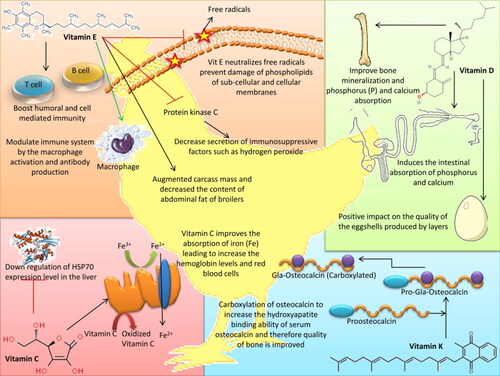During the storage of feed ingredients, various physical and chemical changes can occur, which may affect the quality, nutritional value, and shelf life of the feed. These changes can result from factors such as moisture content, temperature, oxygen exposure, microbial activity, and interactions between feed components. Here are some common physical and chemical changes that can occur during the storage of feed ingredients:
Physical Changes:
Moisture Absorption:
Feed ingredients may absorb moisture from the environment, leading to an increase in moisture content and potential for mold growth, caking, or spoilage.
High moisture levels can promote microbial activity and enzymatic degradation, compromising feed quality and safety.
Particle Size Reduction:
Mechanical abrasion and friction during storage and handling can cause physical breakdown of feed particles, resulting in a reduction in particle size and uniformity.
Particle size reduction may affect feed flowability, handling characteristics, and nutrient accessibility for animals.
Segregation and Stratification:
Differential settling of feed particles based on size, density, and shape can lead to segregation and stratification within storage bins or silos.
Segregation may result in uneven distribution of nutrients and ingredients, affecting feed formulation accuracy and consistency.
Compaction and Caking:
Compression of feed particles under pressure or weight can lead to compaction and formation of cake-like masses, especially in bulk storage systems.
Caking reduces feed flowability, increases handling difficulties, and may result in nutrient stratification or uneven mixing.
Color Changes:
Prolonged exposure to light, oxygen, or heat may cause color changes in feed ingredients, such as fading, darkening, or discoloration.
Color changes may indicate oxidation, Maillard reactions, or degradation of pigments, vitamins, or other heat-sensitive compounds.
Chemical Changes:
Oxidation Reactions:
Exposure to oxygen during storage can initiate oxidation reactions in feed ingredients, leading to lipid oxidation, protein denaturation, and loss of nutritional value.
Oxidative rancidity can cause off-flavors, odors, and deterioration of fats, oils, and lipid-soluble vitamins in feed.
Enzymatic Activity:
Enzymes naturally present in feed ingredients may remain active during storage, catalyzing biochemical reactions such as hydrolysis, proteolysis, or starch degradation.
Enzymatic activity can lead to nutrient breakdown, loss of digestibility, and changes in feed composition and palatability over time.
Maillard Browning Reactions:
Maillard reactions between reducing sugars and amino acids may occur during storage, resulting in browning, flavor development, and formation of Maillard products.
Maillard browning can affect feed appearance, flavor, and nutrient availability, particularly in heat-processed or heat-treated feed ingredients.
Microbial Spoilage:
Microorganisms present in feed ingredients, such as bacteria, molds, and yeast, can proliferate during storage under favorable conditions of moisture, temperature, and oxygen availability.
Microbial spoilage can result in mold growth, fermentation, mycotoxin production, and degradation of nutrients, leading to feed deterioration and health risks for animals.
Nutrient Degradation:
Storage conditions such as temperature, humidity, and exposure to light or air can accelerate the degradation of heat-sensitive nutrients, vitamins, and antioxidants in feed ingredients.
Nutrient losses may occur through oxidation, leaching, volatilization, or enzymatic degradation, reducing the nutritional value and efficacy of the feed.
Mitigation Strategies:
Implement proper storage practices, including adequate ventilation, temperature control, humidity management, and pest control, to minimize the risk of physical and chemical changes during feed storage.
Use appropriate packaging materials, such as moisture-resistant bags, airtight containers, or silo liners, to protect feed ingredients from moisture ingress, oxygen exposure, and environmental contaminants.
Monitor storage conditions regularly and conduct quality assessments, including moisture analysis, visual inspections, and sensory evaluations, to detect signs of deterioration or spoilage and take corrective actions as needed.
Rotate feed stocks, practice first-in-first-out (FIFO) inventory management, and minimize storage times to reduce the risk of feed degradation and ensure freshness and quality of feed ingredients.
Consider the use of antioxidants, preservatives, mold inhibitors, or other feed additives to enhance shelf life, stability, and microbial safety of stored feed ingredients, particularly in high-risk environments or during extended storage periods.



Knowledgeable
Хотите найти информацию о пользователе? Наш сервис поможет полный профиль мгновенно.
Воспользуйтесь уникальные алгоритмы для анализа публичных записей в соцсетях .
Выясните место работы или интересы через автоматизированный скан с гарантией точности .
тг бот глаз бога бесплатно
Система функционирует с соблюдением GDPR, используя только общедоступную информацию.
Закажите расширенный отчет с геолокационными метками и списком связей.
Попробуйте проверенному решению для исследований — результаты вас удивят !
Dating websites offer a modern way to meet people globally, combining user-friendly features like photo verification and compatibility criteria.
Core functionalities include video chat options, social media integration, and detailed user bios to streamline connections.
Smart matching systems analyze preferences to suggest compatible matches, while account verification ensure safety .
https://stickypond.com/dating/psychology-behind-taboo-attraction/
Many platforms offer premium subscriptions with enhanced visibility, such as unlimited swipes , alongside profile performance analytics.
Whether seeking casual chats , these sites cater to diverse needs , leveraging community-driven networks to foster meaningful bonds.